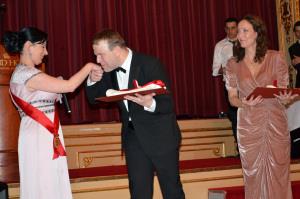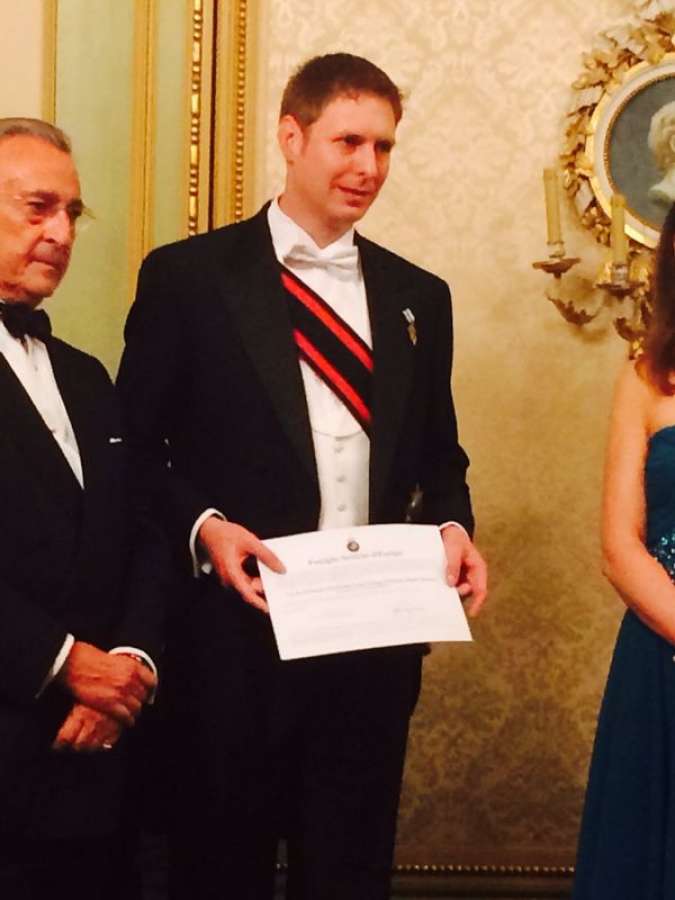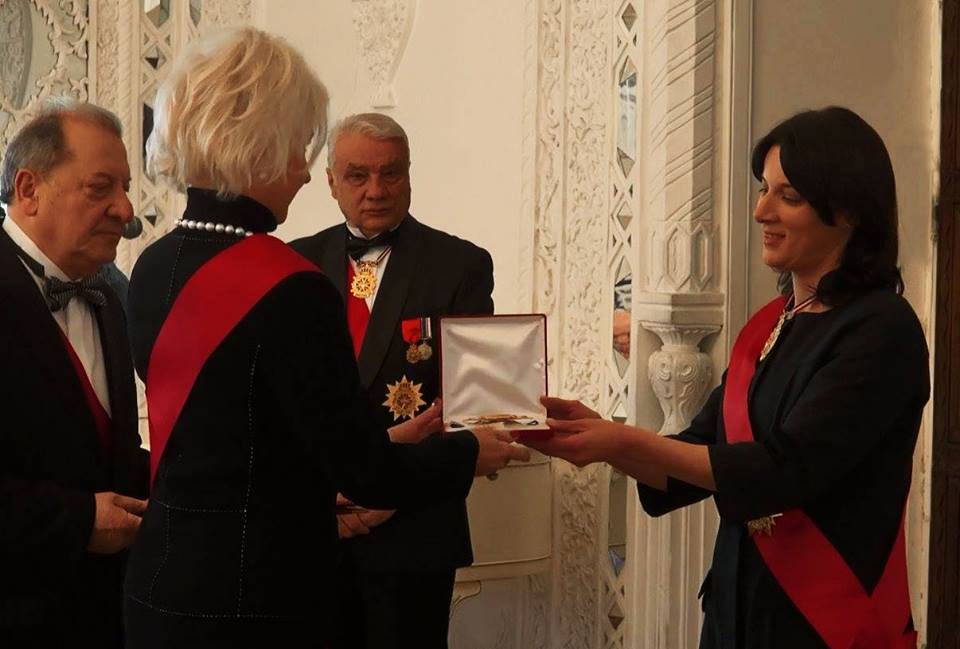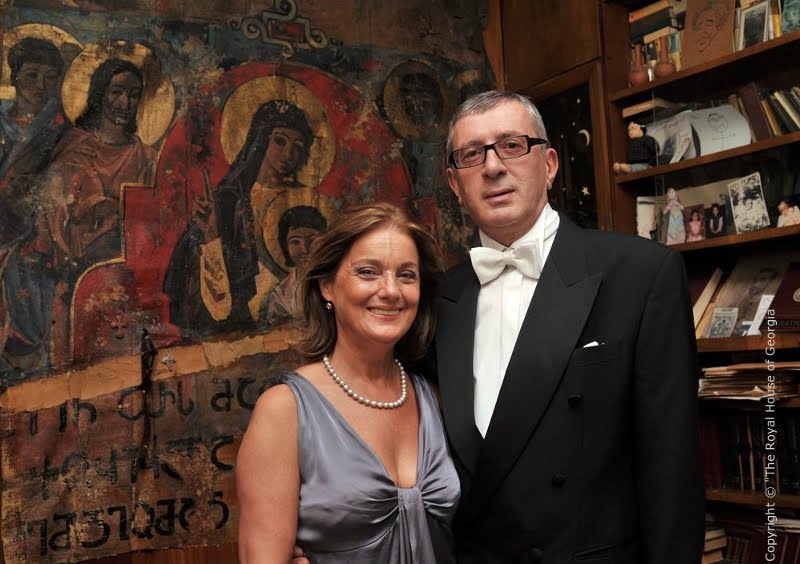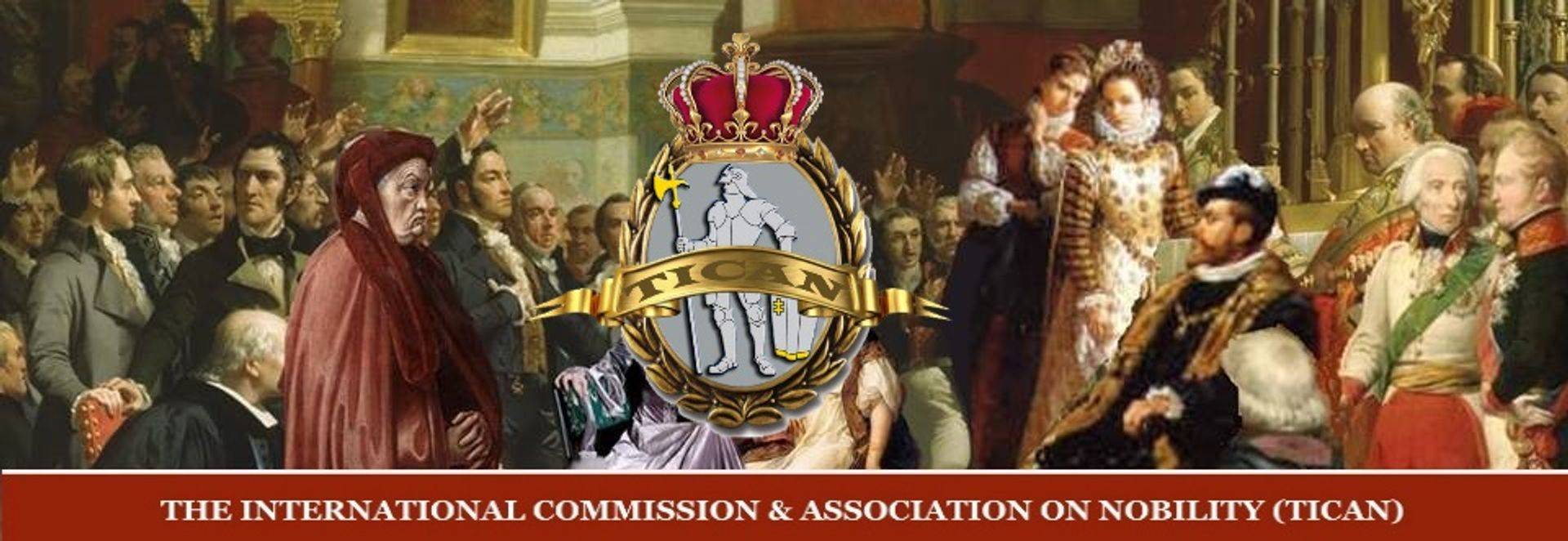
Title
WHO IS NOBLE AND THUS INCLUDED IN THE ALMANACH DE GOTHA?
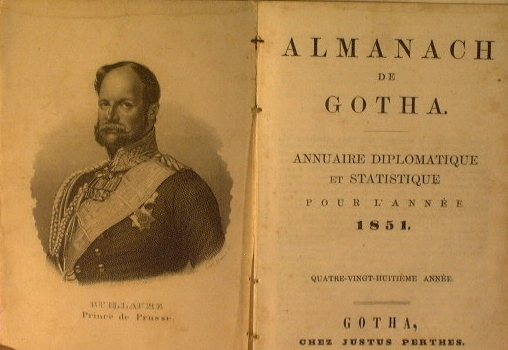
OVERVIEW
Since the end of the 18th century, nobility was experiencing a loss of importance due to an overall social change. Industrialization had created new economic conditions and new fields of activity which were not accepted by the majority of the nobility. The principles of estates, namely the primary rules concerning noble births including a high degree of self-recruitment from the particular generations of sons, was increasingly pushed back. However, the decline of nobility in the 19th and 20th century indicates a constant importance of nobility as a social class in some areas of society. Although statistical tables are rarely found, one can assume that nobility is still overrepresented in diplomatic services and in the armed forces, as measured by its overall importance. Also, in some economical sectors, especially in banks and insurance companies, nobility could hold onto a disproportional amount of leading positions;
Nobility is statistically an elusive population, because there are no direct surveys relating to membership of noble classes. Even in censuses, the membership of nobility is not projected separately, making a collection and statistical analysis of this part of the population very difficult to attain. A solution to this lack of data collection could be on offer from the research in the form of genealogical records undertaken by noble families for many generations. For these families, this research has always been a natural part of the care of family history and personal memories.
In 1765 the first volume of the “Gotha’sche Hofkalender” was published, providing genealogies of noble families to the public at large. During the 19th century, the princely families that were listed in the “Hofkalender” (court guide) were divided into three groups: current sovereigns and their houses, other prosperous houses in Germany, France and Italy, as well as mediatised houses. Furthermore the genealogies of the gentry were published in the following four series in the 19th century: pocket books of the comital houses (from 1825), those of the baronial houses (from 1848), those of the ancient nobility (from 1900) and the genealogical pocket books of the younger nobility (from 1907). Here, the comital and baronial families had their genealogies published every second year whereas the untitled noble families aimed for a publication of their genealogies every fourth year (Fritsch 1968: 4-96, 111-121; Simmel 1908: 742).
The “Gotha’sche” genealogical pocket books were published until 1942 when the publication had to be stopped due to a lack of paper. In the period between the two World Wars, some parts of the German nobility supported and followed the ideology of National Socialism. As a result of the anti-Semitic radicalization of parts of the nobility, an anti-Jewish register was established in 1920/21: “Das Eiserne Buch Deutschen Adels Deutscher Art” (“The iron book of German nobility of German type”), abbreviated to “Edda”. The first volume of the “Edda” was published in 1925. This work was mainly promoted by Baron Albrecht von Houwald (1866-1958), who had previously been an employee in the Prussian College of Arms. Houwald aimed at establishing a register that would only accept “pure-blooded” nobles, i.e. only those nobles who had no Jewish or colored ancestors before 1750. Between 1925 and 1942 four volumes of the “Edda” were published. Since the publication of the “Edda”, those persons whose genealogical table was published in it were also marked with an “E” in the aforementioned “Gotha” (Malinowski 2003: 336-357; Fritsch 1968: 25).
Potential marriage partners for royals. If you were a member of one of the royal houses of Europe, you would buy the Almanac de Gotha to make sure the information about your family had been correctly maintained. Being recorded in this almanac meant you existed for the outside world and belonged to a company of the elect. You could also investigate the origins of a potential marriage partner. If it appeared that your intended was from a lower class, then a morganatic (left-handed) marriage was in the offing. If the woman was of low degree, she and her children would be barred from certain privileges and particularly from her husband's inheritance.
The Almanach itself suffered interference from the House of Napoleon Bonaparte. The Almanac’s “infallibility" was also severely compromised because some royal and noble families simply did not participate, and the book did not pay much attention to noble and royal Houses of the Byzantine Holy Roman Empire. Many princely or ducal families were listed only in its third, non-dynastic section or were excluded altogether, evoking criticism in the 20th century. Its very title shows the focus: Almanach de Gotha...The Almanac of the Gotha, i.e., the mostly German/Prussian Houses.
The two editions, French and German, are almost identical. The plan followed in the first two parts dates from 1815, that of the third from 1824. In 1768 engravings were added to the text. There was a great variety of them at first, but since the end of the last century only portraits are given.
When Soviet troops entered Gotha in 1945, they systematically destroyed all archives of the Almanach de Gotha. In 1951 a different publisher, C.A. Starke, began publication of a multi-volume German-language publication entitled the Genealogisches Handbuch des Adels (GHdA). The publication is divided into subsets; the Fürstliche Häuser subset is largely equivalent to the Almanach de Gotha. However, no single volume of the Fürstliche Häuser includes all the families included in the Almanach de Gotha. It is necessary to use multiple volumes to trace the majority of European royal families.
After World War II, publishing of 'The Gotha' had to cease. The genuine 'Gotha' has not been re-published or re-issued since 1944.
In 1989 the family of Justus Perthes re-established its right to the use of the name Almanach de Gotha. The family then sold these rights to a new company, Almanach de Gotha Limited, formed in London. Justus Perthes considers this a new work and not a continuation of the series last published by his family in 1944 with the 181st edition.
The new publishers launched with the 182nd edition on 16 March 1998, following a break of fifty-four years, at Claridge's Hotel. It was written in English instead of French as the Editor felt that English was now the language of diplomacy. Charlotte Pike served as Editor of the 1998 edition only and John Kennedy as managing director and publisher. The new publishers also revived the Committee of Patrons under the presidency of King Juan Carlos I of Spain and chairmanship of former King Michael I of Romania.
The London publisher produced a further four editions of Volume I (1999, 2000, 2003 and 2004) based on the 1998 edition of Volume I which include Europe's and South America's reigning, formerly reigning, and mediatised princely houses, and a single edition of Volume II in 2001 edited by John Kennedy and Ghislain Crassard which include other non-sovereign princely and ducal houses of Europe. A review in The Economist[1] criticized the low editorial standards and attacked Volume II for a lack of genealogical accuracy.
[1] The Economist is English-language weekly news and international affairs publication owned by The Economist Newspaper Ltd. and edited in offices in London.Continuous publication began under founder James Wilson in September 1843.
In the decades following its first publication in 1763 at the sober, scholarly court of the Dukes of Saxe-Gotha-Altenburg, the Almanach de Gotha acquired a kind of Pentateuchal (Pentateucha is a genus of moths in the Sphingidae family) status among the princely families of Europe. It lent authority to the founding sagas of the principal dynasties of Germany - providing, for example, the reigning Duke of Mecklenburg-Schwerin or Landgrave of Hesse-Cassel with direct lines of descent from primeval patriarchs like Niklot, Prince of the Obotrites, or Lambert I the Bearded. It defined who belonged to the sacred tribe of royalty and who was excluded, offering posthumous vindication to figures like the seventeenth-century Princess of Taranto, who was seldom out of mourning because, as she claimed, she was related to the entire Holy Roman Empire. It laid down the law on procreation, indicating what marriages enabled the transmission of regal blood and what matches would banish the parties and their heirs from the princely firmament - a distinction rendered all the more acute in the early nineteenth century by the creation of a category of “mediatized” families of the former Holy Roman Empire, who, despite losing their power, retained their royal status.
By the middle of that century, the Gotha was as ubiquitous at European courts as books of courtesy in the royal libraries of the Renaissance - a vainglorious Gothic subversion of the mirror-for-princes tradition. As its contents expanded to include royal and noble families from outside the Holy Roman Empire, “that incomparable catalogue”, as H. G. Wells called it, became a handbook for husband-hunters, fortune-seekers, pedants and pretenders. After the First World War, it was the last refuge for the Romanovs, Habsburgs, Hohenzollerns and other nomadic dynasties - one of the “vacant interstellar spaces”, in T. S. Eliot’s words, into which the old world had vanished. Yet in 1945, it too disappeared when the offices of its German publisher, Justus Perthes, were ransacked by the Soviet army searching for information on the whereabouts of surviving members of the Russian imperial family.
The publication was revived in London in 1998 to chart the current generation of European royalty. In the meantime, magazines such as Majesty and ¡Hola! had begun chronicling the fortunes of Europe’s princelings in glossy pantone, rather than eight-point print. The latest edition of the Gotha, which documents the royal and mediatized houses of Europe, does not try to compete (a proposed second volume will deal with non-sovereign dynasties). The only color illustrations are a gloomy portrait of Elizabeth II with the Duke of Edinburgh and an advertisement for a private Swiss bank. Its punctilious itemization of titles, lineage and heraldry aims for scholarship rather than sensation.
The world conjured by the Gotha resembles a magic realist landscape, where present and past, politics and pantomime intermingle anarchically. Ten of the forty-four families listed in the first part, covering sovereign and ex-sovereign houses, retain their thrones. Representatives of several other dynasties have found that the ballot box is no necessary obstacle to power. They include Simeon II, a former king of Bulgaria, who won election as prime minister of the country in 2001, and Prince Paul Romanov, a great-grandson of Tsar Alexander II, who did a turn as mayor of that favorited high-society watering hole, Palm Beach.
Familiar names arise in unfamiliar settings. One Nicolas Sarkózy de Nagy-Bocsa appears in the guise of Co-Prince of Andorra by virtue of the office of French President (the book, which strives gallantly to remain up to date, went to press before this year’s presidential election). The actor Tim Bentinck, best known as David Archer in the eponymous Radio 4 series, features in part two, which lists the mediatized dynasties of the Holy Roman Empire, in the role of eleventh Count Bentinck and Waldeck-Limpurg. Scions of venerable dynasties surface in myriad places and professions. Austrian archduchesses serve as advertising executives and restaurateurs; a princess from the house of Bonaparte, whose founder scorned England as a “nation of shopkeepers”, works as a sales assistant.
This taxidermist display of the remnants of the ancien régime continues in the “Diplomatic and Statistical Directory”. Here, the Sovereign Military Order of Malta merits a longer entry than China, and the names of Canadian heralds or members of the Duke of Savoy’s “Grand Magistry of the Dynastic Orders” outnumber government ministers. Yet although the Gotha is an unembarrassed celebration of a world that is largely lost, the portcullis is not always jammed fast against modernity. Take, for example, the entry for Sigismund, Grand Duke of Tuscany, who divides his responsibilities as Grand Master of the Order of St Stephen with a career as a software engineer.
At times, nostalgia and idiosyncrasy stray into error. Spelling mistakes are almost as abundant as Saxe-Coburg ramifications, while a statement of editorial principles rather alarmingly dispenses with apostrophes. Some family legends - such as the Ottoman boast of descent from a grandson of Noah - do not merit inclusion in a work with authoritative aspirations. Most quixotically of all, the title page displays the word “Annual”, although it has been eight years since the last edition appeared. The “legendary” Almanach de Gotha, it seems, is not immune from a little myth-making of its own.
"Once again this publication has taken aim at being a comprehensive guide, and missed by a mile. The plump mustard colored volume purports to catalogue the genealogies of the Non-Sovereign Princely and Ducal House of Europe, attempting to be the successor to the original Almanach de Gotha that was last issued in 1944. In following the format of the original publication, including a selection of European Princely and Ducal families, the result is neither comprehensive nor, in individual cases, accurate. Those anxious for this information and who do not have access to other, superior sources, may find it useful, but will soon wonder at both the lacunae and some of the inclusions. If they have any expectation of finding therein accurate or comprehensive information, then they will be sadly disappointed. Here, however, they may find the dead are living and the living dead, the extinct are flourishing and the extant extinguished" (Statement of Guy Stair Sainty, born 7 December 1950, is an art dealer and author on royal genealogy and heraldry).
"Not to diminish its authority, the Gotha is naturally limited due to publication parameters. The genealogies that appear in the multiple series typically list the known living members of the family (at time of publication) and trace the family's ancestry back two, three, or even four generations and often include a short summary on the family's noble origin and development, including a description of their coat-of-arms. Since the Gotha series first appeared in 1763, clearly other secondary sources must be consulted to trace the genealogy back further, if the family's (noble) origin predated 1763. On the other hand, unless someone has already conducted successful research to trace the family's ancestry and chosen to publish their findings, another secondary source (i.e. published family history) may not yet exist, so that searching for primary sources like church records becomes required.
Complicating the task of tracking down church records is the incompleteness of some articles in the secondary sources, including the Gotha. The missing information is typically the nuts and bolts of genealogical data: dates and places, and sometimes, even names. Confirming the accuracy of the secondary sources can consequently be a very difficult task: where to look for a birth, marriage, or death record, or other primary sources? An example of the best case in the Gotha would be the article on the von Rechberg und Rothenlwen zu Hochrechberg family. Less than genealogically helpful is the contribution on the Someda di Chiaromonte; notice the lack of dates and places, and for the last listed individual, a name.
It is from these examples it is concluded that the noble families with a more detailed article in the Gotha are likely the ones who have been more diligent about keeping family records and documents and who validate the popular understanding of noble families: their genealogies are well documented. Conversely, those articles with incomplete/missing information prove that if you discover a descent from a noble family, for example a Germanic one, you are not guaranteed a genealogical goldmine that leads to a family tree already fully researched, which extends back 600-650 years to the Late Middle Ages. Admittedly, to find your family in one of the Gotha series will certainly establish the family history and heritage. The proven genealogical connection is lacking. The task of discovering the primary records to prove the genealogical connection can makes noble genealogy research as difficult as tracing a commoner ancestry". Glen W. Covert M.A. (Noble Family Histories Demystified: The German and Austrian Example)

